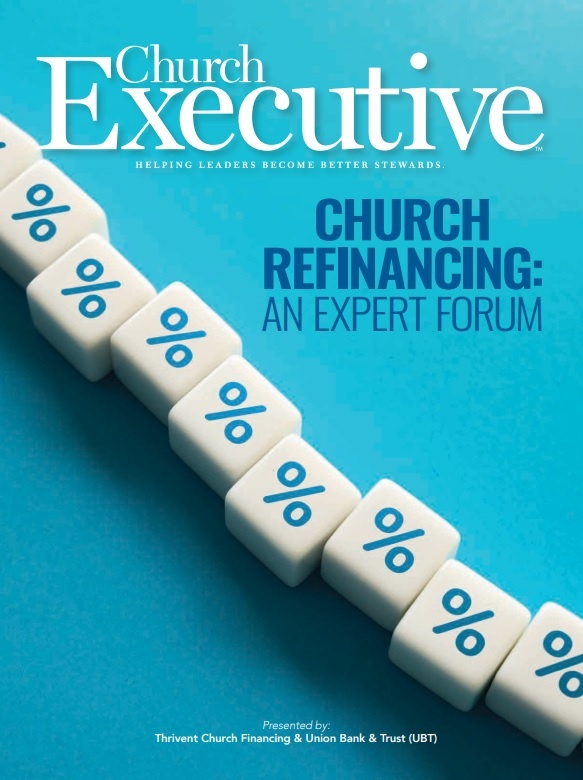

Senior Relationship Manager, Church Financing
Investments Division
Thrivent Church Financing
 By Chris Lewis
By Chris Lewis
Over the last year, a dramatic shift in interest rates has served to stall a large portion of refinancing efforts. The difference in the rate a church is currently paying, and the existing market rates, is substantial in many cases. This is creating an appropriate pause in ministry refinancing because the cost of money has increased sharply.
The practical implication is that refinancing today, in most cases, will increase costs, not decrease them.
Ministries that did not refinance while rates were historically low are now faced with a more consequential decision: Do we go ahead and refinance now, even though current rates are higher than our existing loan?
Or do we wait until our loan matures when a balloon payment comes due, and run the risk of facing even higher rates?
This is clearly a difficult position to be in; the higher your interest rate, the more money is being paid to the lender — and the less money is being spent on ministry investment.

However, some ministries are recognizing a silver lining with these higher rates
If your ministry secured a long-term fixed interest rate with a swap contract or has a yield maintenance/mark to market prepayment penalty, you are likely in a position to benefit (make money on the swap) or not face a penalty, as today’s loan replacement rates are higher than your current rates. This means lenders can reinvest in new loans at the higher rates that are being sold today. In this situation, your ministry might have a cost-benefit or cost-neutral opportunity to refinance early, securing a long-term fixed rate today. This ensures that you don’t face an uncertain interest rate environment in the future.
By waiting, your ministry might temporarily delay the sting of rising interest costs — but no one truly knows where rates are headed. Some argue that rates will come down, while others suggest that we will have persistent high rates for the foreseeable future. The Federal Reserve has raised interest rates 10 times since May 2022, driven by a realization that inflation remains stubborn and unpredictable. Stubborn inflationary pressures make it difficult to predict where interest rates might go in the coming months. The reality is that no one really knows.
You might be asking, What’s my next step?
I would encourage your ministry to take action and explore your refinancing options today. If your loan matures in the next three years, having a conversation with an experienced church lender might help you better understand your options and assist you in developing a plan of action.
You might find that you have more options to make a positive stewardship impact than you originally thought. Waiting is unlikely to be a helpful strategy unless you have validated it by having a conversation with an experienced church lender. For healthy ministries, there are still opportunities available.
Step 1 — Contact multiple lenders that are committed to church financing that can provide you with an overall view of your current market options.
Step 2 — Upon receiving feedback, identify if waiting is your best option. Lenders should be able to help the church identify the costs associated with an early refinance, including closing costs, interest costs for the lifetime of the proposed loan, prepayment penalties, and so on.
Step 3 — Discuss options with your decision-making team to determine whether to act now or stay the course with your current loan.
We have all seen how higher prices have impacted purchasing power through the current economic cycle. Depending on the consumer good, the demand has not necessarily decreased; instead, it has created a more educated consumer. Buyers are carefully evaluating if it makes sense to stick with what they have or to buy something new. In either case, buyers are more intentional about their purchases.
Ministries are in a similar situation when it comes to their real estate mortgage loans. Some might determine that they will deal with their loan when it matures; others might make the decision to act now. In either case, the intentional ministry is making its decision based on intentional interactions with lenders who have their best interest in mind.
Chris Lewis is Senior Relationship Manager, Church Financing in the Investments Division at Thrivent Church Financing.
Thrivent Church Financing has been providing competitive financing solutions to ministries across the country for more than 100 years. Its long-term fixed rates and fully amortizing loans have helped ministries secure a predictable loan that propels them towards financial freedom without costly maturities and resetting interest rates.


